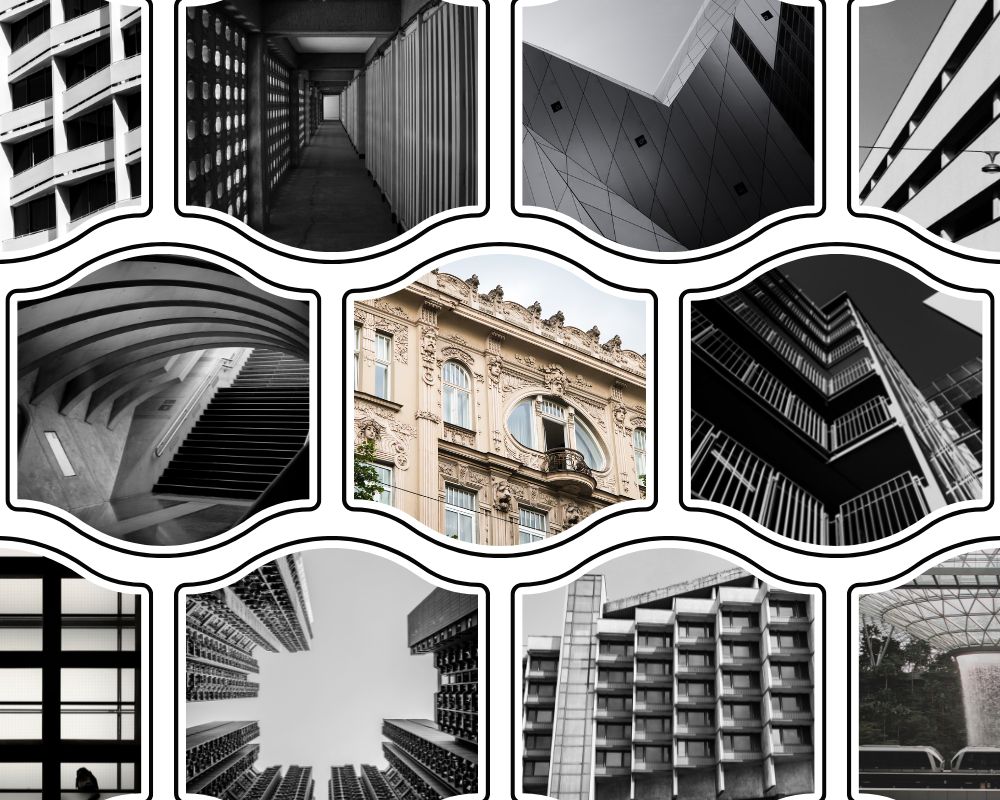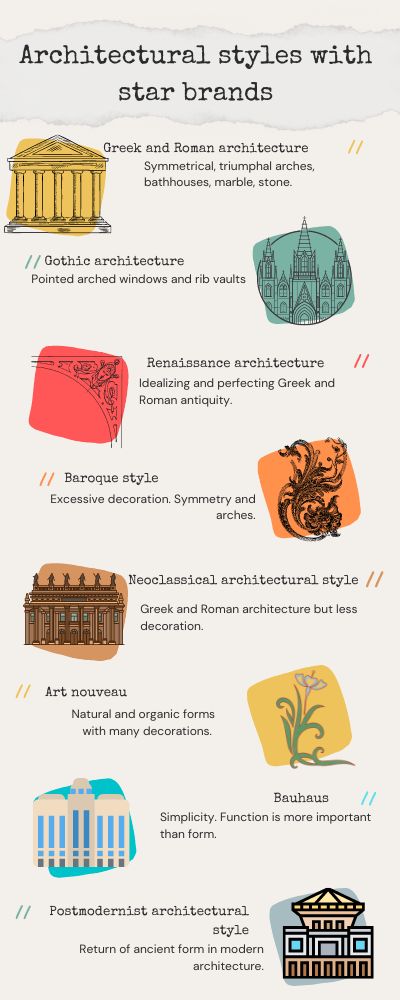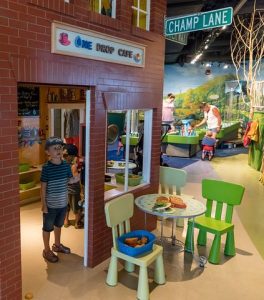An architecture tour is a guided or self-guided visit to a building or group of buildings, where the architectural features and design of the buildings are highlighted and explained. Architecture tours can be conducted in a variety of settings, including historic monuments, modern buildings and even entire neighborhoods or cities. The purpose of an architecture tour is to educate the public about the design, history and significance of the buildings visited.
Tours can be led by architects, architectural historians or trained educators, and can be offered to the general public or to specific groups such as students or professional organizations.

There are these ways you can take an architecture tour of a city:
There are several ways for a city tour. You can go by foot (walking), bicycle, public transportation, a guided tour or a tour with an app.
Walking
A popular way to do a city tour is to simply explore the city on foot. This gives you the chance to explore the city at your own pace and soak up the city’s atmosphere and culture.
Biking
If you like to be active, a city tour by bicycle can be a fun option. This way you can explore the city in a sporty way and burn some calories at the same time. Besides a bike, in some cities you can also explore the city by scooter or scooter.
Public transportation
Another way to do a city tour is to use public transportation, such as the bus, streetcar or subway. This gives you the chance to see the city from a different perspective and you can easily travel from one sight to another.
Guided tour
If you like to learn more about the history and sights of the city, a guided tour can be a good option. The guide can tell you all about the main sights and share anecdotes about the city.
Tour with an app
A modern way to take a city tour is to use an app that guides you around the city. These apps often offer audio and video content about the city’s sights, allowing you to explore the city at your own pace.
“By looking at a city’s architecture, you learn a lot about a city’s history.”
Recognizing building styles within architecture
Architecture has many architectural styles, each with its own characteristics. Some well-known styles include Art nouveau, Baroque architecture and Bauhaus. Briefly, the characteristics of some architectural styles are as follows:
Classical architectural styles such as Greek and Roman architecture
Greek and Roman architecture is characterized by some distinctive elements:
- Classical orders: Both styles use the classical orders, such as the Doric, Ionic and Corinthian orders, which are characterized by specific columns, friezes and entablements.
- Symmetry: Both styles value symmetry in construction, with facades often being mirror images of each other.
- Building materials: Both styles primarily use marble, stone and brick.
- Temples: Temples are an important feature of Greek architecture, with a vestibule, a naos (the sanctuary) and an ascending roof. Roman temples are often larger and have more decorations.
- Triumphal arches and amphitheaters: Triumphal arches are a typical Roman structure, while amphitheaters are typically Greek.
- Aqueducts: Roman architecture is also characterized by the many aqueducts that were built to transport water to the city.
- Basilica: The Roman basilica was a large, covered space used for trials, meetings and other public occasions.
- Therms: Romans also built many thermal baths, public bathhouses equipped with saunas, baths and sports facilities.
Gothic architectural style, characterized by pointed arched windows and rib vaults
Gothic architecture is a building style characterized by a number of specific elements. This style developed in Europe in the 12th and 13th centuries and was especially popular in the architecture of churches, cathedrals and monasteries.
- Spired arched windows: One of the most striking features of Gothic architecture is its pointed arched windows. These windows, often with rose windows, were used to allow more light into the interior of the buildings.
- Rib vaults: Gothic architecture also used rib vaults, a system of buttresses that reduced the pressure of the roof on the walls. This made it possible to build larger buildings with larger windows and fewer buttresses.
- Vertical Stretch: Gothic architecture has a strong vertical stretch. The buildings often appear taller than they are thanks to the narrow windows and the towers or spires that are often on top.
- Decoration: Gothic buildings are often decorated with sculptures, carvings and reliefs.
- Building materials: Gothic architecture often uses brick or natural stone, such as limestone, rather than marble, as in classical architecture
- Interior: Colorful stained glass windows, paintings and sculptures were often used in the interiors of Gothic buildings to beautify the space.
Renaissance architecture, which was inspired by Renaissance art and architecture
Renaissance architecture is a building style that developed in Europe in the 15th and 16th centuries. The style was inspired by the art and architecture of the Renaissance era, a time of cultural, scientific and artistic flourishing. Renaissance architecture was very influential and is still considered one of the highlights of European architectural history. Many buildings from this period can still be seen in Europe, such as the Palazzo della Signoria in Florence, Italy, and Château de Chambord in France.
- Classical influences: Renaissance architecture is influenced by the classical architecture of antiquity, such as Greek and Roman architecture. This can be seen in the orders used, such as the Doric, Ionic and Corinthian order, and the symmetry in construction.
- Proportions: Renaissance architecture places great emphasis on proper proportions and proportions. Buildings are often balanced and in harmony with their surroundings.
- Decoration: Decoration plays an important role in Renaissance architecture. Sculptures, reliefs, cornices, paintings and frescoes are used.
- Windows: Windows are often larger compared to Gothic architecture and arch forms are more rounded.
- Building materials: Renaissance architecture often uses marble, rather than brick or natural stone, as in Gothic architecture.
- Palazzi: Another feature of Renaissance architecture are the Palazzi, large mansions with a symmetrical facade and a beautiful entrance with a staircase.
Baroque architectural style, characterized by lavish decoration and symmetry
The Baroque architectural style is an architectural style that developed in Europe in the 17th and 18th centuries. This style is characterized by lavish decoration and symmetry. Many Baroque buildings can still be seen in Europe, such as St. Peter’s Basilica in Rome, Italy, and Schloss Schönbrunn in Vienna, Austria….
- Overabundant decoration: Baroque architecture is rich in decorations, such as sculptures, reliefs, cornices, paintings and frescoes. These decorations are often based on mythological or religious subjects.
- Symmetry: As in Renaissance architecture, Baroque architecture places great emphasis on symmetry and proportions. Buildings are often balanced and in harmony with their surroundings.
- Arches: Baroque architecture often uses arches, particularly segmental arch forms. These arch forms are often combined with pilasters, which are also an important element of the style.
- False arches: Baroque architecture often uses mock constructions, such as artificial caves, cave-like spaces, and other elements that suggest that a building is larger or more complex than it really is.
- Interior: The interiors of Baroque buildings often use colorful stained glass windows, paintings and sculptures to embellish the space.
- Building materials: Baroque architecture often uses marble, rather than brick or natural stone, as in Gothic architecture.
Neoclassical architectural style, which focuses on ancient classical architecture
The Neoclassical architectural style is an architectural style that developed in Europe in the late 18th and early 19th centuries. This style was inspired by the classical architecture of antiquity, such as Greek and Roman architecture. Many Neoclassical buildings can still be seen in Europe, such as the Brandenburg Gate in Berlin, Germany, and the Royal Palace of Madrid, Spain.
- Classical influences: Neoclassical architecture is influenced by ancient classical architecture, such as Greek and Roman architecture. This can be seen in the orders used, such as the Doric, Ionic and Corinthian orders, and the symmetry in construction.
- Proportions: Neoclassical architecture places great emphasis on proper proportions and proportions. Buildings are often balanced and in harmony with their surroundings.
- Decoration: Decoration plays a less important role in Neoclassical architecture compared to Baroque architecture. Sculptures, reliefs, cornices are used, but they are often rather more soberly executed.
- Windows: Windows are often larger compared to Baroque architecture and the arch forms are more rounded.
- Building materials: Neoclassical architecture often uses marble, rather than brick or natural stone, as in Gothic architecture.
- Buildings: Neoclassical architecture was often used for buildings of a public nature, such as government buildings, banks, museums and universities.
Art nouveau, an architectural style characterized by natural forms and decorations
The Art nouveau architectural style is an architectural style that developed in Europe and North America in the late 19th and early 20th centuries. This style is characterized by natural forms and decorations. Many Art nouveau buildings can still be seen in Europe, such as the Guimard House in Paris, France, and the Gaudí House in Barcelona, Spain.
- Natural forms: Art nouveau buildings often have an organic style, with round shapes and natural motifs, such as leaves, flowers and tendrils. This is a reaction to the rigid, geometric forms of industrial architecture.
- Decoration: Decoration plays an important role in Art Nouveau architecture. Sculptures, reliefs, decorative moldings, paintings and stained glass windows are used. These decorations are often based on natural motifs.
- Asymmetry: Art nouveau buildings often have asymmetrical facades, with different shapes and heights of windows and doors.
- Innovation in materials: Art nouveau architects often used innovative materials such as concrete and steel, along with traditional materials such as wood and glass.
Bauhaus, a modern architectural style that focuses on functionality and simplicity
The Bauhaus building style is an architectural and design style that originated in the 1920s. The Bauhaus was an art and design school in Germany aimed at developing a new, functional and aesthetic architecture and design. The school had a major influence on the development of modern architecture and design.
- Function over form: Bauhaus architecture was based on the principle that the function of a building was more important than its form. The architects focused on creating buildings that were efficient, comfortable and pleasant to be in.
- Simplicity: Bauhaus architecture is characterized by simple and geometric design. Buildings often have clean, rectangular shapes and a minimum of ornamentation.
- Innovation: Bauhaus architects experimented with new materials and techniques, such as steel and concrete, to create more flexible and efficient buildings.
- Design and art: Bauhaus architecture also emphasized bringing together architecture, design and art. Many Bauhaus architects were also designers or artists, creating furniture, textiles, lighting and other objects designed specifically for their buildings.
Postmodernist architectural style, characterized by divergent design and use of color
The Postmodernist architectural style is an architectural style that developed in the 1970s and 1980s as a reaction to the modernist architecture of the previous century. This style is characterized by a return to traditional forms and decorations, and a reduction in attention to function and efficiency. Many postmodernist buildings can be seen in the United States, Europe and Asia, such as the AT&T Building in New York and the Pompidou Center in Paris.
- Returning to traditional forms: Postmodernist architecture often uses traditional forms and elements, such as columns, arches, cornices and ornaments, which often refer to architecture from classical antiquity or the baroque period.
- Pastiche: Postmodernist architects often use elements from different historical styles and periods in one building. This is often called “pastiche,” a mixture of different styles, sometimes in a humorous way.
- Deconstructivism: Some postmodernist architects experimented with deconstructing traditional forms and creating buildings with asymmetrical, irregular shapes.
- References to pop culture: Postmodernist architecture often makes references to pop culture, such as advertising, television and film.
- Diminished attention to function: Postmodernist architecture places less emphasis on a building’s function and more on its aesthetic appearance.
An architecture tour near you
When taking part in an architecture tour, it is important to have some idea of the historical context of the buildings you will be viewing. This can help you better understand the architecture and appreciate the significance of the buildings. Try to look at the buildings open-mindedly and try to understand how and why they were built. Also, try to keep your eyes open to the different styles and elements used in the buildings. Pay close attention to the guide or tour guide during the tour. They will share a lot of interesting information and anecdotes that you might not notice if you were on your own. If you don’t understand something or want more information, feel free to ask the guide questions.
It is fun to take pictures of the buildings you view, but be respectful and ask permission if you want to take pictures inside a building. Above all, remember to enjoy the experience and try to learn as much as you can about the architecture and the city or region where you are. Check out the map below for architecture tours in your area. For a complete listing of all architectural styles with a timeline, check here.




















